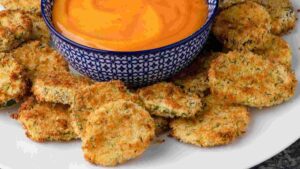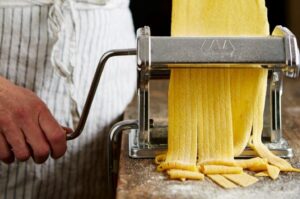Why Your Bread Dough Isn’t Rising — And How to Fix It Fast
Nothing is more frustrating than prepping your ingredients, kneading your dough, and waiting—only to find your bread hasn’t risen. You’re left with a flat, dense lump that’s anything but bakery-worthy. If this sounds familiar, you’re not alone.
Home bakers around the world struggle with dough that doesn’t puff up the way it should. Fortunately, solving this issue often comes down to simple tweaks. Whether it’s your yeast, temperature, or flour, small mistakes can make a big difference.
I once spent weeks perfecting a sourdough recipe that refused to rise. After some trial, error, and help from seasoned bakers, I found my kitchen temperature was just too cold. That tiny detail made all the difference.
In this article, we’ll walk you through why your bread dough isn’t rising and how to fix it with practical, easy-to-follow solutions. From yeast troubleshooting to ideal proofing conditions, we’ll cover it all. And if you love baking at home, don’t forget to explore Home Decorations Tips for kitchen setup inspiration that elevates your baking game.
Check the Yeast: The Heart of the Rise
If your dough won’t rise, yeast is usually the first suspect. Yeast is a living organism, and if it’s dead or inactive, your bread won’t rise—period.
Common yeast issues include:
- Expired yeast: Yeast that’s too old loses potency. Always check the expiration date.
- Water temperature: Water that’s too hot can kill yeast; too cold and it won’t activate.
- Storage conditions: Yeast should be stored in a cool, dry place or refrigerated.
How to test yeast activity:
Dissolve 1 teaspoon of sugar in ½ cup of warm water (around 105–110°F or 40–43°C), then stir in 1 packet (2¼ teaspoons) of yeast. Wait 10 minutes. If the mixture becomes frothy, the yeast is active. If not, it’s time to buy new yeast.
According to King Arthur Baking, active dry yeast loses strength at temperatures above 120°F and dies completely around 140°F. So always use a thermometer when in doubt.
I once accidentally used boiling water to activate yeast—spoiler: the dough never rose. Now, I use a digital thermometer every time.
Flour Matters: Choose the Right One
Not all flours are created equal. The type and quality of flour directly affect your dough’s rise and texture.
Bread flour vs. all-purpose flour:
- Bread flour has more protein (about 12–14%) which creates more gluten. More gluten equals better rise.
- All-purpose flour has lower protein (about 10–12%), so the structure isn’t as strong.
If you’re using all-purpose flour and your dough isn’t rising well, try switching to bread flour.
Watch for bleached flours:
Bleached flour can have weakened gluten-forming proteins, which reduces rise. Go for unbleached, high-protein flours for best results.
Bob’s Red Mill reports that higher-protein flour absorbs more water, leading to a firmer dough that holds gas better—essential for a good rise.
Additionally, don’t skip the salt in your recipe. Salt strengthens gluten and controls yeast growth. Too much, however, can kill yeast. A balance is key.
Proofing Temperature: The Room Might Be Too Cold
One of the most overlooked factors in bread rising is proofing temperature. Dough rises best between 75°F and 80°F.
Signs your kitchen is too cold:
- Dough takes longer than two hours to double in size.
- Surface feels cold and stiff.
- No noticeable puffing after several hours.
Easy ways to create a warm proofing environment:
- Place dough in a turned-off oven with the light on.
- Use a proofing box or a slow cooker set to “keep warm.”
- Cover your bowl with a warm, damp towel.
The Kitchn suggests placing a cup of boiling water inside the oven with the dough to create humidity and warmth.
From personal experience, I started proofing my dough inside a microwave with a warm bowl of water. It works like magic—no fancy tools required.
And while you’re improving your kitchen setup, be sure to discover how long do carrots take to boil at this helpful guide here https://homedecorationstips.com/boiling-time/boiling-carrots-to-perfection-preparation-timing-and-serving-tips/.
Kneading and Gluten: Don’t Underwork (Or Overwork)
Kneading helps develop gluten, which is the net that traps gas from the yeast and causes the dough to rise.
Signs of under-kneaded dough:
- Dough tears easily when stretched.
- Looks shaggy and lacks smoothness.
- Doesn’t hold its shape well.
Signs of over-kneaded dough:
- Dough becomes stiff and bounces back too fast.
- It feels tight and is hard to shape.
Hand-kneading takes about 10–12 minutes. A stand mixer takes 8–10 minutes. Perform the “windowpane test” by stretching a small piece of dough—if it forms a thin, translucent sheet without tearing, it’s ready.
According to America’s Test Kitchen, the dough’s internal structure affects not just rise but final texture and flavor. Too little kneading and your loaf won’t rise properly. Too much, and it might rise, then collapse.
I’ve learned to stop kneading the moment the dough passes the windowpane test. Overdoing it once made my focaccia turn out like a brick.
Dough Hydration: Moisture Levels Can Make or Break the Rise
The amount of water in your dough affects gluten development and yeast activity. Dry dough may rise slowly or not at all.
How to find the right hydration level:
- A typical bread recipe uses 60–75% hydration (water weight compared to flour weight).
- Wetter doughs (like ciabatta) rise faster but need more folding.
- Drier doughs need more time and stronger kneading.
Too little water leads to tight, dense dough. Too much and it may spread out and collapse.
You’ll know your dough is properly hydrated when it’s slightly tacky but not sticky. I’ve found using a kitchen scale ensures consistent hydration every time.
For beginner bakers, start with 65% hydration for reliable results. Slowly adjust from there as you gain experience.
Timing: Patience Is Key
Sometimes, the problem isn’t what you did—it’s not waiting long enough.
Rising can take anywhere from 1 to 3 hours depending on your ingredients, temperature, and dough type.
Don’t rush the process:
- First rise (bulk fermentation) should double the dough in size.
- Second rise (after shaping) gives final puff and oven spring.
Use a clear container to measure growth easily. Mark the dough height at the start, and wait until it doubles.
According to a study from Modernist Bread, extending bulk fermentation by 30 minutes improved flavor and structure in most doughs.
Once, I baked a loaf too early because I was short on time. It looked fine on the outside, but the inside was dense and gummy. Lesson learned: rushing never pays off in baking.
Read More Also: Can You Really Make Mayonnaise in an Air Fryer?
Conclusion
Fixing rising issues isn’t rocket science. It’s all about checking the basics:
- Is your yeast fresh?
- Is your kitchen warm enough?
- Did you knead the dough just right?
By identifying the problem step-by-step, you can fix the issue and enjoy tall, fluffy, delicious bread.
Baking is part science, part art—and with practice, you’ll get better every time. Keep a baking journal, experiment with small batches, and don’t be afraid to fail. That’s how you grow.
Read More Also: What Is a Spaced Repetition System? Master Learning with SRS Flashcards
FAQs
What happens if my dough rises too long?
Over-proofed dough can collapse during baking, causing a dense, flat loaf. Watch for doubling, not tripling.
Can I still use dough that didn’t rise?
Yes, you can reshape and let it rise again in better conditions. If it still won’t rise, use it for flatbreads or crackers.
How do I know when my dough is ready to bake?
Gently press a finger into the dough. If the dent springs back slowly, it’s ready. Fast bounce means it needs more time.
Why is my dough sticky even after kneading?
Too much water or not enough kneading can cause stickiness. Try adding a small amount of flour and knead again.
Can I use instant yeast instead of active dry yeast?
Yes. Instant yeast doesn’t need proofing and works faster. Use 25% less than active dry yeast.








